Electric hybrid bike purchasing advice: how to choose the right product
- What you need to know
- Electric trekking bikes are suitable both for city traffic and for extended tours with luggage.
- These are mostly pedelecs, where the motor only assists driving and does not replace pedaling.
- Mid-mounted engines deliver the most natural riding experience.
- The level of support can be adjusted to one’s own needs in several stages.
- How long the battery actually lasts depends on driving behavior and external conditions.
Bikes for all
Most people learn how to use a bicycle as a child, for example to go to school or to visit friends. Extensive touring or cycling races are also popular pastimes. Even in adulthood, the bicycle is a popular piece of sports equipment and means of transport. In the course of the mobility turnaround, the number of cyclists in larger cities is even steadily increasing, especially because there are now more offers such as rental bikes.
Electric bicycles are available for less athletic or physically challenged city dwellers: They require less physical effort than conventional bicycles because the integrated motor provides assistance while riding. Rugged electric trekking bikes are particularly well suited for a variety of surfaces.
Advantages of electric trekking bikes
With electric trekking bikes, riding on changeable terrain is even more comfortable than with the non-motorized counterpart: The motor assistance compensates for strong headwinds as well as steep paths. This enables even beginners to cover long distances – the sense of achievement is motivating. So electric trekking bikes take away inhibitions from cycling and help to be more active in sports.
Riders can even spend a vacation of several days on the bike and, for example, camping or riding from accommodation to accommodation. In addition, in rural areas, e-trekking bikes are a better means of transportation for everyday work than e-city bikes, as they can better handle different road surfaces.
The eco-balance is not to be scoffed at either: E-bikes do not produce exhaust fumes and leave no residue on the road. In addition, e-trekking bikes can also be used without motor assistance or only at the lowest level. This is not only better for the environment, but also for the battery.
Disadvantages of electric trekking bikes
Electric trekking bikes also have some disadvantages. Due to the installed technology, they are more sensitive to weather conditions than classic bicycles. Although the motor and battery are adequately protected from normal rain and snow, they should not be left outside in the rain and cold for extended periods. It is recommended to store the e-trekking bikes in a covered, ideally dry and warm place. In addition, you are dependent on the battery: When it is empty, you need a suitable place to charge it. Although it is possible to cycle using only muscle power without any problems, problems can arise depending on the location and the degree of exhaustion.
Furthermore, the risk of accidents is about higher than for non-motorized bicycles. Especially at the beginning, users have to get used to the changed driving experience, for example to avoid an obstacle in time. The faster the e-trekking bike, the more difficult it is to maneuver precisely. Lastly, the purchase price is also important. You rarely pay less than 2,000 euros for electric trekking bikes.
What distinguishes electric trekking bikes?
Classic trekking bikes are robust all-rounders that make relaxed weekend tours as well as the way to work or to the supermarket possible without any problems. They have a sturdy frame, luggage systems for bags and are equipped with lighting systems, reflectors, stands, mudguards and bells for the benefit of roadworthiness. The seating position on trekking bikes is upright and comfortable. Their tires are wider and more treaded than those of city bikes, but narrower and flatter than those of mountain bikes. In addition, they are often equipped with a suspension fork, which absorbs small shocks and increases ride comfort. Thanks to these features, trekking bikes are suitable for both smooth and uneven roads and gravel.
Most electric trekking bikes hardlydiffer in construction from classic trekking bikes: They are mostly hardtails with suspension on the front and partly a suspension seatpost. There are no significant differences in the frame, tires, handlebars or braking systems. The biggest difference is actually the installed technology: Electric motor, battery, sensors, controller and display with controls.
The electric motor drives the wheel, the battery supplies it with power. While motion sensors determine when the driver pedals, torque sensors measure the force he or she applies. The controller receives the sensor data and regulates the drive. The display is attached to the handlebar and shows data such as the battery status or – if available – the set support level. The built-in technology requires reinforced frames and increases the overall weight of the e-trekking bike
E-bike, pedelec or speed pedelec?
When looking for the right electric trekking bike, interested parties are often confronted with the terms e-bikes, pedelecs and speed pedelecs. E-bike often serves as a generic term for all motorized bicycles.
In fact, classic e-bikes are the bikes that start without any effort at the push of a button. They reach a maximum speed of 25 kilometers per hour and have a motor power of 500 watts. Such e-bikes are considered mopeds from a speed of six kilometers per hour and are therefore subject to registration. Users must insure them for about 35 to 70 euros and mark them with a license plate. In addition, drivers must be at least 16 years old and have a Class AM or B driver’s license. With a traditional e-bike, you can’t ride on either the sidewalk or the bike path.
Electric trekking bikes are mostly pedelecs, which stands for ” pedal electric cycle”. Here, the motor only works in a supporting role. As soon as riders start pedaling, they set an impulse and the motor starts. Pedelecs can reach speeds of up to 25 kilometers per hour with a maximum motor output of 250 watts. Since they are legally considered bicycles, they are not subject to registration nor do they require a driver’s license.
The faster variant are speed pedelecs, also known as S-pedelecs. They reach a speed of up to 45 kilometers per hour and a motor power of up to 500 watts. Due to their higher speed, they are classified as mopeds and are subject to registration. Thus, riders must meet the same requirements as for e-bikes: This includes license plate, insurance, class AM or B driver’s license, minimum age and helmet requirement. Riding on bike paths is also not allowed.
SUV e-bike as an alternative?
A new type of e-bike has been on the market for some time: the SUV e-bike also known as the all-terrain or crossover e-bike. It is intended to bridge the gap between electric city, trekking and mountain bikes and is suitable for both roads and unpaved forest or field paths. To this end, it has features of all bike types, such as the frame geometry of a mountain bike, the seating position of a trekking bike and the traffic-compliant equipment of a city bike. Since SUV bikes combine different types of e-bikes, they are usually not as good as the specialists in the areas of application.
This is what matters when buying
Ideally, an electric trekking bike is tailored exactly to the needs of the rider. Mounting and dismounting as well as driving on changeable ground is comfortable.
Frame
The frame of a bicycle holds all components together, including handlebars, saddle, tires as well as bottom bracket. It must be able to support the weight of riders and luggage, as well as be stable, safe and comfortable at the same time , even on uneven floors and in case of impacts. High stability means that the frame can withstand the weight and the ground as well as pedaling, braking and steering forces. This in turn enables safe driving behavior.
When it comes to ride comfort, the most important thing is an upright posture and easy ascent and descent. An upright posture relieves the spine and protects the knee joints. To ensure the optimal seating position, a suitable frame height is important. Online there are various calculators to determine the appropriate height. Here, the body height or the stride length or the stride height are used. The latter provides more accurate results than height.
With e-bikes, the demands on the frame are even higher than with classic bicycles. The installed technology not only increases the weight that weighs on the frame, but due to the motor assistance even greater forcesact on the bike when driving. Ideally, this is hardly noticeable when driving.
Frame shapes
An important aspect is the frame shape or geometry. In terms of frame shape, interested parties can choose between diamond, trapezoid and comfort frames. Traditionally, diamond frames were used for men’s bicycles and trapezoidal or comfort frames for women’s bicycles. Meanwhile, all forms are unisex.
Diamond frames are characterized by a horizontal top tube between the saddle and handlebars. On many modern electric trekking bikes, the tube is slightly inclined towards the seat tube. To mount and dismount, riders must move their extended leg over the saddle. The top tube gives the bike a high stability and wound stiffness.
Trapezoidal frames are a variation of classic diamond frames, where the top tube is more inclined to the saddle. This makes it easier to get on and off. Trapezoidal frames are thus a practical mix of comfort and stability.
Comfort frames are also known as deep-entry, wave frames or easy-entry. Unlike the other two forms, they have only a single, low-lying, stable tube. Thanks to the resulting low step-through height, it is very easy to saddle and dismount the bike. Low-entry bikes are ideal for riders whose mobility is limited, for example, due to age or a pre-existing condition. Furthermore, the center of gravity is low with this frame geometry, which conveys safety when driving.
Tires
Most electric trekking bikes are equipped with 28-inch tires, but some also have 27.5-inch models. There are greater differences in tire width than in diameter: Typical are between 37 and 55 millimeters. The wider the tires, the safer they roll over rough surfaces and the more comfortable the ride. In addition, thick tires have a better grip than thin models and are usually more profiled. So they are ideal for riding off paved roads and light terrain.
On the other hand, for those who ride mainly in cities and on paved roads, thinner tires sometimes make more sense, as they are smoother and more maneuverable. Meanwhile, there are also tires that have a straight center web and coarse sides – ideal for those who ride the bike on roads and off-road.
Suspension
The suspension of electric trekking bikes is often the same as non-motorized versions. This means that lightweight and rigid suspension forks with a typical travel of 50 to 60 millimeters are used. They are ideal for quick and short trips. The damping is sometimes too low for longer, rough routes. However, there are certainly models with a suspension travel of up to 100 millimeters or those in which the damping can be adjusted to one’s own needs via air pressure. Such features are more common in mountain bikes that specialize in rough terrain. Electric trekking bikes with mountain bike-like suspension forks offer comfort on longer tours and in light terrain.
Motor
In terms of motor power, it is really only the decision between pedelec and S-pedelec that is important, as the permitted motor power is strictly limited to a maximum of 250 or 500 watts. E-bike motors come from manufacturers such as Bosch, Shimano, Specialized or Yamaha. More important than the manufacturer or the power of the motor, however, is that it fits into the overall concept of the e-bike. For example, it does not make sense for a very powerful motor to provide maximum support to riders only at a high cadence. In that case it is not usable.
Typical torques of trekking bike motors are around 50 to 70. However, there are also e-bike motors with values of less than 50 and more than 100. Lower torque motors often have a smaller battery or provide less assistance.
With most motors, the assistance can be set to several levels. The Bosch Performance Line GEN3 , for example, has four levels and a maximum assistance level of 300 percent. In addition, there is an e-mountain bike mode that allows dynamic support from 120 to 300 percent.
The more powerful the engine, the heavier it usually is. In addition, the battery capacity must be large enough to utilize the full motor power. This is also reflected in the weight of the electric trekking bike: They usually weigh between 20 and 30 kilograms. Bosch, for example, offers motors that weigh three to four kilograms and batteries that weigh about two and a half to three kilograms. Think about how much support you need beforehand. Those who ride through places with a lot of inclines or are not as physically fit may need more help than those who ride on more level routes, as well as long-time cyclists.
The position of the motor on the bike is also important, as it has a direct influence on the riding experience. Modern electric trekking bikes now often feature mid-mounted motors like the Bosch modelmentioned above. They are directly connected to the crank of the bottom bracket and positioned accordingly: in the area of the crank behind the bottom bracket and directly in the frame. This not only centers the wheel’s center of gravity, but also indirectly synchronizes the motor with pedaling.
Alternatively, there are pedelecs with hub motors. This is integrated into either the front or rear wheel hub. This shifts the center of gravity of the entire wheel to the front or rear. This changes the driving experience considerably: Riders are pulled or pushed.
Switching system
As with classic bikes, electric trekking bikes are also equipped with derailleur or hub gears. Hub gears are mainly found on entry-level electric trekking bikes, while derailleur gears are found on mid-range and high-end bikes, as they are more compatible with high-torque motors. If the motor of the trekking bike is located in the middle, its power must even be throttled to integrate a hub gear. They can only handle a torque of 50.
Hub gears offer several advantages: This is a closed system that is built directly into the scar. As a result, all components are not only largely protected from dirt and moisture, but also require little maintenance. It is usually sufficient to replace the gear oil every two years. However, hub gears have only a few gears – sometimes only three – and a weaker ratio than derailleur gears, so you have to pedal harder in the same gear setting.
Derailleur gears are more complex to maintain, but they can withstand high torques and can better translate the applied force. A rule of thumb states: The more gears available, the less power is needed to negotiate steep paths. Non-motorized bikes may well have 30 gears.
In the case of electric trekking bikes, the two market leaders SRAM and Shimano now offer derailleurs with up to twelve gears. For those who ride little or mainly on flat land, less than ten gears are enough. Those who use the electric trekking bike on uphill climbs and on varying surfaces are better off with at least ten gears. Modern 11 or 12 derailleurs from SRAM and Shimano have partly even an integrated damping, which reduces the chain slap.
Brakes
The support that electric motors provide while driving places high demands on the braking systems. They must reliably withstand constant braking and acceleration at average speeds of 25 kilometers per hour. The most common type of electric trekking bike is a hydraulic disc brake. Occasionally, the hydraulic rim brake from Magura HSis still found. Those with cable pull are not robust enough for modern e-bikes.
On e-trekking bikes with disc brakes, a brake disc is fixed to the wheel hub and surrounded by a brake caliper. The brake pistons are also located in it. To stop the wheel, the brake pistons press the brake pad against the brake disc. Bikes in the upper price range sometimes have particularly large brake discs or additional brake pistons to increase effectiveness. For those who travel with a lot of luggage or often have to cope with inclines, the extra braking power is definitely an advantage. Otherwise, a normal hydraulic disc brake will do.
Battery power
Battery power determines how long you can ride with assistance. Since trekking bikes are meant for longer trips, they tend to have a large, enduring battery or a dual system with two batteries. The batteries are either attached to the outside of the frame or integrated into the frame. External batteries can also be attached to the down tube, in front of or behind the seat tube, and in the luggage carrier. While such batteries can easily have a capacity of 500 watt hours, integrated batteries sometimes have a battery capacity of up to 750 watt hours. With two batteries in an external dual system, even more than 1,000 watt hours are possible. This makes it possible to drive 200 kilometers before the batteries need to be recharged.
Exactly how long the battery will last is difficult to estimate, just like the range. It depends, among other things, on which support level you ride with, but also on external conditions such as temperature, wind and underground, as well as the carrying weight. You have to charge a large battery less often, but it makes the bike heavier.
Ideally, the battery size is matched to the driving behavior: The longer and greater the need for support, the longer the battery must last. If you only need little support and thus hardly use any of the capacity, you only carry around unnecessary weight. An alternative is a smaller battery with a short charging time and quick charger, which can charge during the lunch break, for example. If you only switch on higher support levels when there is a strong headwind or on inclines, you can significantly increase the range.
Display
There is now also a wide choice of displays and on-board computers. Simple versions provide only basic information such as speed and allow you to set the resistance. Higher-quality displays have further additional functions: For example, they measure the cadence or have an integrated navigation system. Many on-board computers in the higher price range can be connected to the smartphone and controlled via app.
Whether you choose a basic or premium display, it is important that all information is legible. The screen should be well lit and the font large and clear so that riders can see all the data at a quick glance while cycling. A night mode with backlight is advantageous for use in low-light conditions.

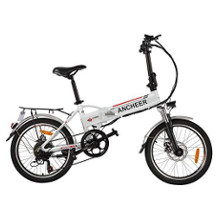
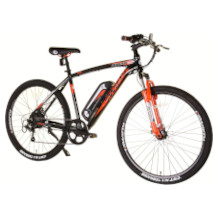
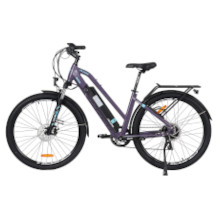
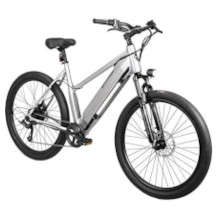
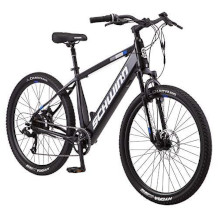
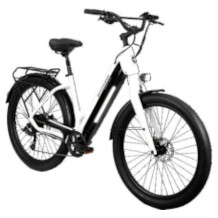

 no reviews
no reviews